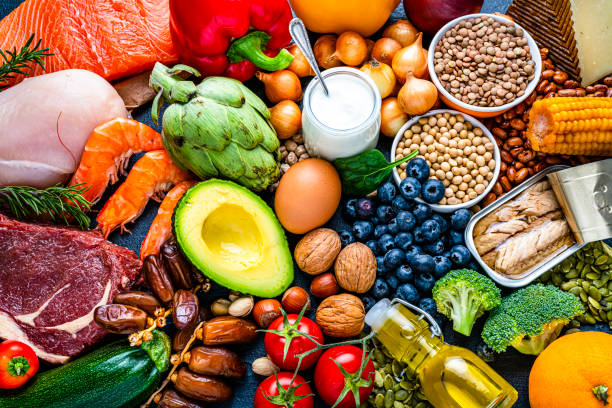In today’s fast-paced world, the idea of transforming your body and mind is more achievable than ever before. Well, thanks to the convenience of home workouts. Whether you’re trying to get fit, improve your health, or reduce stress, working out at home can be a game-changer. Not only can it save you time and money, but it also offers the flexibility to tailor your workouts to your personal needs, preferences, and schedule. In this article, we’ll explore how to effectively transform both your body and mind with home workouts, and provide helpful tips to guide you along the way.
What are the Benefits of Home Workouts?
- Affordable: Gym memberships, trainers and transportation cost money a lot. Home exercises either require no or very little additional equipment, which translates to more bucks in your pocket over time.
- Ease of Convenience: You can work out anytime you need to, slowing your fitness regime into your schedule. Gym hours do not limit you; you can work out in the morning, afternoon or evening.
- No more feeling insecure: There is no need to feel insecure about exercising around other human beings. Home workouts give you the opportunity to perform in a private setting where no one is judging your slow pace other than you.
- Wide-Ranging Choices: There are so many online sources to choose from (apps, YouTube videos and even plans of attack). You can use them for finding workouts appropriate for your level and goals should not be a problem.
- Develops a connection between your mind and body: Exercising out at home will assist you to connect more with your physique. It allows you to focus on form, your breath and being mindful without distractions which means more health benefits both physically and mentally.
Setting Up Your Home Workout Space
Setting the atmosphere is key in order to stay motivated and get the best results before exercising. So here are a few simple tips to get your home workout space up and running. Find a place that gives you room to move freely. An uncluttered, peaceful environment keeps you concentrated.
Most exercises require no equipment, but you can use some basic tools — resistance bands, dumbbells, a yoga mat or a kettlebell. They come in a lot of options and don’t occupy much space. Listen to your favourite playlist, set a mirror so you can practise form while working out, etc. Bright lighting can also help energize a room. Maintain a tidy and structured workout area. This will also help to uphold the environment and ensure that you stay motivated in the long run.
Crafting Your Home Workout Routine: Best Exercises to Know
Always remember that while creating any well-rounded workout plan, ensure that it is targeting all your major muscle groups. It should be a perfect combination of strength and cardiovascular training. Let’s have a rundown discussion of how you should break down your daily workout schedule:
1. Warm-Up (5-10 Minutes)
For getting the muscles ready for any intense workout, you should warm up the body. This will be important for preventing any major injuries. Pay attention on the dynamic stretches or light cardio such as:
- Jumping jacks
- Arm circles
- Leg swings
- High knees
- Strength Training (20-30 Minutes)
Strength exercise increases muscular mass, raises metabolism, and corrects posture. These bodyweight workouts below call for no equipment:
- Squats: Stand with your feet shoulder-width apart, lower your hips until your thighs are parallel to the ground, and then stand back up. Squats strengthen your legs and glutes.
- Push-Ups: A classic upper body exercise that targets the chest, shoulders, and triceps. Modify by doing knee push-ups if needed.
- Lunges: Step forward with one leg, lowering your hips until both knees are bent at about 90-degree angles. This targets your legs and core.
- Planks: Hold a plank position (forearms on the floor) to engage your core. Keep your body in a straight line from head to heels.
- Glute Bridges: Lie on your back, knees bent, and feet flat on the floor. Lift your hips to form a straight line from shoulders to knees, targeting the glutes and lower back.
- Cardio (15-20 Minutes)
Cardio exercises help improve cardiovascular health, burn calories, and boost energy levels. Some effective home cardio exercises include:
- Jump Rope: A fantastic cardio exercise that improves coordination and burns calories quickly.
- Mountain Climbers: Start in a push-up position, then alternate bringing your knees toward your chest. This engages the core, arms, and legs.
- Burpees: A full-body exercise that combines squats, push-ups, and jumps. It’s a great way to get your heart rate up.
- Running in Place: If space is limited, simply running in place can provide an effective cardio workout.
- Cool-Down and Stretch (5-10 Minutes)
After your workout, take time to stretch and cool down. This helps your muscles relax, reduces soreness, and improves flexibility. Focus on gentle stretches for the:
- Hamstrings
- Quads
- Shoulders
- Lower back
- Calves
Mental Health Benefits of Home Workouts
In addition to physical health benefits, working out at home can significantly improve your mental health. Here’s how:
- Reduces Stress: Physical activity releases endorphins, which are known as the “feel-good” hormones. This can help reduce stress and anxiety, leaving you feeling more relaxed and positive.
- Improves Focus and Productivity: Regular exercise boosts your energy levels, improves sleep, and sharpens your focus. After a workout, you may find yourself more productive in your daily tasks.
- Promotes Self-Confidence: As you see improvements in strength, stamina, and overall fitness, you’ll likely feel more confident in your appearance and abilities. This can positively impact other areas of your life.
- Fosters Mindfulness: During home workouts, you have the opportunity to connect deeply with your body, focusing on each movement and your breathing. This mindfulness can help improve mental clarity and emotional resilience.
Tips for Staying Motivated with Home Workouts
- Create feasible goals. Begin with goals that are manageable, whether it be exercising three days a week or learning an exercise. You can build up gradually as you go along.
- Monitor your progress. Maintain a journal or use an app to record the workouts you do. Progress gives you a sense of motivation and sees how far you have come.
- Variety is the spice of life. Change up your workouts so you do not get bored, try yoga, pilates, Hiit, or strength sessions and see what keeps you interested. This will mix things up and keep you from hitting a plateau.
- Finding workout groups online, or joining social media communities focused on the same health and fitness goals can help you stay motivated. They can provide encouragement, inspiration, and accountability.
- Go for small treats, such as a relaxing bath or healthy treat. You can simply have the ability to indulge in your favourite activity after you have achieved each phase of your goal.
Common Home Workout Mistakes to Avoid
Home workouts have plenty of positives, but there are a few classic mistakes to look out for:
- Not Warming Up/Cooling Down: These two phases of exercise are just as important and skipping them means you’re more prone to injury and a longer recovery time.
- Bad Form: It’s very easy to get into bad habits with form without a trainer, which can easily lead to injury. Maybe record yourself to see if your form is correct, or check mirrors.
- Overtraining: You might be working too hard, and consistently pushing your body without proper recovery can lead to burnout or injury. Be sure to add rest days to your schedule.
- Inconsistency: Not showing up for workouts can impede progress. Make a routine, and follow it as much as you can.
10 FAQs About Home Workouts
- Do I need equipment for home workouts?
There are different bodyweight exercises which are easy to do without using equipment. To enhance the workout, you will just need dumbbells, resistance bands and a yoga mat.
- How often should I work out at home?
You should be aiming to workout at least five times in a day. This workout should be a mixture of strength training, cardio, and flexibility exercises.
- Can I lose weight with home workouts?
Consistent workouts should also involve a healthy diet for losing weight successfully and improving overall fitness.
- How do I stay motivated to work out at home?
Set clear goals, track your progress, and vary your routine to keep things interesting.
- Are home workouts effective for building muscle?
Yes, you can achieve effective muscles with the proper intensity and focusing on the progressive overload.
Conclusion
So this was an end of discussion about the workout routine and how they contribute to transforming your mind and body. If you are still unsure about how to create a proper routine, consult a trainer and make it part of your lifestyle. In just a couple of days, you will notice magical differences.









